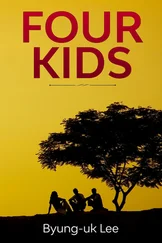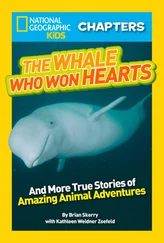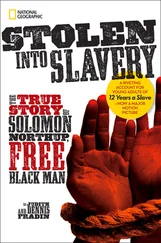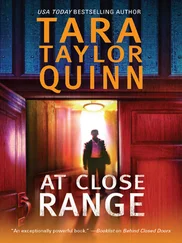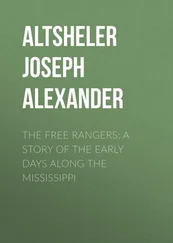The problem is that once we see horrific images, only half of our brain takes the time to say, “Wow. That makeup person did an incredible job with those puncture wounds. And hats off to the wonderful writing staff!” (If, indeed, any part of the brain ever thanks writers.) The other half of our brain just takes in those gruesome images wholesale and files them under “Sick World, comma, What we live in.”
In his book The Science of Fear , Daniel Gardner explains that once an image gets into that “reptilian” part of the brain, not only can you not shake it, you also can't extricate it from all the other images and feelings jostling around in there, either. After all, it's only been the last hundred years or so that the brain has started seeing realistic-looking images (TV, movies) that weren't directly applicable to its fate (lions, spears). So it hasn't figured out yet how to separate the real from the manufactured. Especially whatever's manufactured for Liam Neeson.
Thus, the fight-or-flight, feel-it-in-your-guts reptilian brain treats a Joker trailer and the nightly news as one and the same. So when we are faced with a situation we think might be risky and we are trying to figure out what to do, it starts rummaging through all the horrible stuff it has seen and comes to the conclusion, “Jeez Louise! Look what can happen! Run for your life!”
Now, if you're wondering why our reptilian brains would be making us more scared today than our parents’ reptilian brains made them just a generation ago, one reason is that when your parents were growing up, they weren't awash in quite this level of gore. They weren't seeing dead bodies with realistic towel-hook holes in them. They weren't seeing all those autopsies CSI popularized—if that's the word—or horrific dismemberments or decaying bodies dredged from the river. In fact, says TV historian Thompson, “I don't think there's a single episode of Law and Order that could have even been shown before 1981.” That's because, until then, graphic images like the girl with the duct tape, rapist, and phone cord were taboo. In fact, they were the stuff of porn.
What happened?
In 1971, the rules changed. From 1929 up to that point, says Thompson, broadcasters held themselves to a code of conduct so strict that they couldn't even use the word “pregnant.” They couldn't use bad language. They couldn't show a toilet bowl on TV. (That's why the Ty-D-Bol man was always, confusingly, in the tank.) Through the Great Depression, a world war, two nuclear bombs, and the civil rights movement, the material you could hear on the radio and see on TV stayed pretty much the same. Tame. Then, in 1971, along came All in the Family .
That groundbreaking show became a huge turning point in our media and our culture. Every week, All in the Family broke another taboo. It talked about impotence, molestation, constipation. It flushed a toilet! And the ratings went through the roof. It became the number-one-rated show for five years straight—a feat never surpassed, though the Cosby Show did, later, tie it (a can of worms we will leave unopened for the rest of our days).
Naturally, broadcasters said, “Number one for five years? Let's make five thousand of these!” So they started throwing in all the sex and grit and bodily functions they could. As did TV news. And let's not forget that, that being the 1970s, plenty of social upheaving was going on outside the boob tube, too.
In 1981, things changed dramatically again, as cable TV came into its own and started segmenting the hitherto mass audience. You wanted to watch women writhing in leather bustiers? You had your MTV. Or your Playboy Channel. Or your HBO. Whatever. You had a lot of channels. You wanted weepy stories of women with unusual diseases? You had Lifetime. And if you wanted news all day long? You turned on CNN.
Let's stop here and think about what that meant: an entire twenty-four hours to fill with news. Every day. How on earth could you keep people watching the same channel for hours on end?
There is one proven and tested way. Pick a sensational tabloid story and treat it seriously, earnestly, gravely, as if all you really want is the best for your viewers. Repeatedly broadcast the same heart-wrenching footage, looping back again and again, right after this message, to create a sense of the most compelling, continuing, crying-shame story ever to dominate a news cycle. A story so gripping, viewers would feel almost guilty turning it off. A story you could drag out (like this paragraph) for hours and hours, days and days, even if you had only tiny crumbs of info to add. And to date, the best story anyone has ever found turns out to be … a missing child.
“Missing kids are everybody's fear,” said a cable exec I can't quote by name because she's still in the biz (even though she's not happy about it). “Especially when there's a story with somebody who looks normal.” (Apparently “normal” = “middle- to upper-middle-class white person,” in TV executive speak.) “People really respond to that. They think, ‘That could be me.’”
The granddaddy of this programming was the 1983 two-part mini-series, Adam, based on the story of Adam Walsh, a six-year-old boy who was abducted from a Florida Sears and beheaded in 1981. It makes me sick just to type that.
The series about him—a ratings blockbuster—introduced America to Adam's dad, John Walsh, who appeared with his wife at the end of the show with photos of other missing children. Walsh became a crusader for children's safety and went on to host America's Most Wanted . He also helped found the National Center for Missing and Exploited Children. Quite likely you came of age eating breakfast with those kids.
“The whole milk carton phenomenon begins at this time,” says Thompson, referring to the phenom of dairies printing the photos of missing children on their cartons—without even clarifying whether the child was kidnapped by a stranger (extremely rare), taken by a divorced parent in a custody dispute (more likely), or had simply run away (also quite likely). Mornings became pretty somber as we ate our Frosted Flakes with the milk carton kids staring us in the face. In fact, it began to feel as if millions of kids were being taken, willy-nilly, across the country. And all together, this set the template for our modern-day fear of abduction.
That fear, as I'll say again and again in this book, bears no relation to reality. The statistics cited by the National Center for Missing and Exploited Children itself show that the number of children kidnapped by strangers holds pretty steady over the years—about 1 in 1.5 million. Put another way, the chances of any one American child being kidnapped and killed by a stranger are almost infinitesimally small: 0.00007%. Put yet another, even better way, by British author Warwick Cairns, who wrote the book How to Live Dangerously : if you actually wanted your child to be kidnapped and held overnight by a stranger, how long would you have to keep the child outside, unattended, for this to be statistically likely to happen?
About seven hundred and fifty thousand years.
(And after the first hundred thousand years, you couldn't really consider them a “kid” anymore.)
But if we rarely heard about kidnapped children before the 1980s—with the exception of the Lindbergh baby—they have since become a staple of TV. A particular child's story that captures the public's interest can go on for months—sometimes years. Between Elizabeth Smart, Jayme Closs, and Maddie McCann, we all feel as if we “know” someone who disappeared. We've watched their home videos. We've “met” their families on TV, or seen the mini-series. And because we've heard about them so much, their stories start to seem tragic, yes, but not totally surprising. They fit perfectly into a worldview that says, “Just another example of kids getting snatched and killed.” Our brain has stored all the other stories before it, so each new one just confirms our belief that child abductions are happening all the time.
Читать дальше



